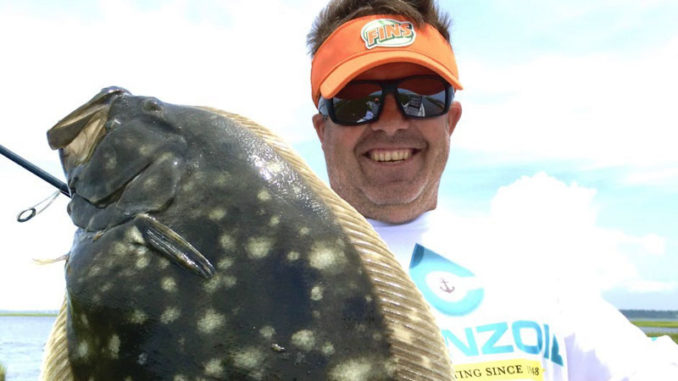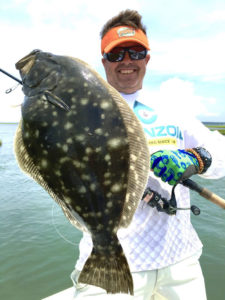
2020 flounder season shows big promise
After almost a year on the sidelines, North Carolina fishermen will be able to keep flounder for six weeks in 2020, beginning Aug. 16.
“Flounder fishing should be off the charts when the season opens,” said guide Noah Link of Harkers Island. He said the season closure that began last Sept. 4 — along with a restricted commercial fishing season — makes the Aug. 16-Sept. 30 season very promising. “It looks like the closure already has helped flounder. So this summer should be great.
“That’s a lot of the reason we’ve caught flounder (this spring) in the marshes,” he said. “The giggers aren’t getting out there, so nobody’s been hitting flounders.”
This year, Lynk and his clients, along with anglers guided by his son, Tanner, have caught and released dozens of hefty, legal-sized flounder while fishing for spotted seatrout and red drum.
“Reds and specks hit the same lures as flounders,” said Lynk, who operates Noah’s Ark Fishing Charters. “It wasn’t unusual to catch a dozen or more 3- to 5-pound flounder each trip.”
The Lynks fish inside waters around Cape Lookout: near Harkers Island and behind Shackleford Banks, Beaufort and Morehead City. After years of fishing Crystal Coast waters, the father and son know where to find flounder and other species.
“I don’t hit the wrecks at all for flounders in August,” said Lynk (252-342-6911).

Inside creek mouths and creek bends with ledges are good spots during falling tides.
“Tanner often goes into a creek during high tide and waits for the tide to start falling, then fishes his way out,” Lynk said. “When the tide drops, baitfish come out of the marshes and get swept along edges. Bottom contours with holes also concentrate flounder…. I target holes; I anchor there and don’t drift fish.”
Lynk’s tackle includes 7-foot Plasma spinning rods with a 2000 or 3000 series spinning reels spooled with 12-pound braid, a 2- to 3-foot leader of 30-pound P-line fluorocarbon and a 1/0 or 2/0 J-hook. Lynk ties on 1/4- or 3/8-ounce jigheads, depending on the current, tipping them with baitfish. Popping-cork rigs are also effective with live baits.
“I like mud minnows or killifish,” he said. “Flounders eat them; finger mullets are harder to keep alive.”
Recreational fishermen can keep four flounder per day of at least 15 inches in length.




Be the first to comment